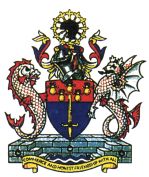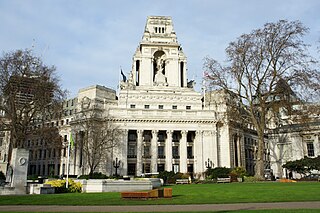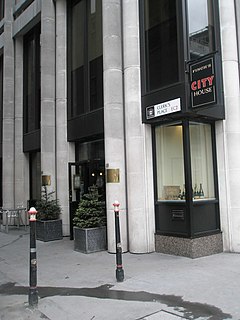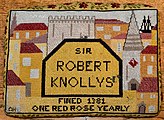The Lord Mayor of London is the mayor of the City of London and the leader of the City of London Corporation. Within the City, the Lord Mayor is accorded precedence over all individuals except the sovereign and retains various traditional powers, rights, and privileges, including the title and style The Right Honourable Lord Mayor of London.

There are 110 livery companies, comprising London's ancient and modern trade associations and guilds, almost all of which are styled the 'Worshipful Company of...' their respective craft, trade or profession. These livery companies play a significant part in the life of the City of London, not least by providing charitable-giving and networking opportunities. Liverymen retain voting rights for the senior civic offices, such as the Lord Mayor, Sheriffs and Corporation, its ancient municipal authority with extensive local government powers.

The Lord Mayor's Show is one of the best-known annual events in London as well as one of the longest-established, dating back to the 13th century. A new lord mayor is appointed every year, and the public parade that takes place as his or her inauguration ceremony reflects that this was once one of the most prominent offices in England.

The Company of Watermen and Lightermen (CWL) is a historic City guild in the City of London. However, unlike the city's other 110 livery companies, CWL does not have a grant of livery. Its meeting rooms are at Waterman's Hall on St Mary at Hill, London.

The Worshipful Company of World Traders is one of the 110 Livery Companies of the City of London.

All Hallows-by-the-Tower, at one time dedicated jointly to All Hallows and the Virgin Mary and sometimes known as All Hallows Barking, is an ancient Anglican church on Byward Street in the City of London, overlooking the Tower of London.

St Olave's Church, Hart Street, is a Church of England church in the City of London, located on the corner of Hart Street and Seething Lane near Fenchurch Street railway station.

Tower Hill is infamous for the public execution of high status prisoners from the late 14th to the mid 18th century. The execution site on the higher ground north-west of the Tower of London moat is now occupied by Trinity Square Gardens.
Sir William Laxton was a Lord Mayor of London during the reign of Henry VIII, and eight times Master of the Worshipful Company of Grocers. He is the founder of Oundle School.
Knollys, Knolles or Knowles, the name of an English family descended from Sir Thomas Knollys, Lord Mayor of London, possibly a kinsman of the celebrated general Sir Robert Knolles. The next distinguished member of the family was Sir Francis Knollys or Knowles, English statesman, son of Sir Robert Knollys, or Knolles, a courtier in the service and favour of Henry VII and Henry VIII. Robert had also a younger son, Sir Henry, who took part in public life during the reign of Elizabeth I and who died in 1583. From the time of Sir Francis, the family were associated with Greys Court at Rotherfield Greys and Caversham Park, then in Oxfordshire, as well as the nearby town of Reading in Berkshire, where the family's private chapel could once be seen in the church of St Laurence. Lettice Knollys was pronounced the most prominent member of the family, from her birth in 1543 until her death in 1634

A waterman is a river worker who transfers passengers across and along city centre rivers and estuaries in the United Kingdom and its colonies. Most notable are those on the River Thames and River Medway in England, but other rivers such as the River Tyne and River Dee, Wales, also had their watermen who formed guilds in medieval times.

The Worshipful Company of Parish Clerks is one of the Guilds of the City of London. It has no livery, because "[i]n the 16th century, the Parish Clerks declined to take the Livery on the grounds that the surplice was older than the Livery and was the proper garb of members of the Company." It is not, therefore, technically a livery company although to all intents and purposes it acts as such. It is one of two such historic companies without livery, the other being the Company of Watermen and Lightermen.

Woolbeding is a village and ecclesiastical parish in the District of Chichester in West Sussex, England, 1 mile (1.6 km) north-west of Midhurst and north of the River Rother and A272 road.

St Mary Bothaw was a parish church in the Walbrook ward of the City of London. It was destroyed in the Great Fire of London in 1666 and not rebuilt, although some of its materials were used in the rebuilding of St Swithin, London Stone, whose parish it was merged with.

Sir Thomas Knollys or Knolles was an English businessman in London who was active in both local and national government.

Frances Seymour, Duchess of Somerset, was an English noblewoman who lived during the reigns of Elizabeth I, James I, Charles I and Charles II. Her father was Robert Devereux, 2nd Earl of Essex, Elizabeth I's favourite who was executed for treason in 1601. She was the second wife of William Seymour, 2nd Duke of Somerset, and the mother of his seven children.

John Norman was a 15th-century draper, sheriff, alderman and for a term the Lord Mayor of London. He is known as being the first lord mayor to take a boat to Westminster to pledge his allegiance. Up until that point lord mayors of London had ridden or walked to Westminster in the yearly pageant on Lord Mayor's Day. Such river pageants existed until 1856, and today the lord mayor rides within a state coach during the pageant which is known today as Lord Mayor's Show. John Norman left his name to a song, supposedly created by the watermen who rowed him to Westminster, titled "Row the Boat, Norman".

Coldharbour, also spelled Cold Harbour, Cold Harborough, Cold Herbergh, Cold Herberge, and Cold Inn, were two London neighbouring estates in the since dissolved parishes of All-Hallows-the-Less and All-Hallows-the-Great, in today's Dowgate Ward of the City of London. From the 13th century to the mid-17th century Coldharbour occupied the area between Upper Thames Street and the Thames to the east of Cannon Street station. It was destroyed in the Great Fire of 1666. One of the estates was used by the Dukes of Exeter and briefly as a college of heralds.

Seething Lane is a street in the City of London. It connects All Hallows-by-the-Tower, Byward Street, with St Olave's Church, Hart Street. The street is named after an Old English expression meaning "full of chaff", which was derived from the nearby corn market in Fenchurch Street. Samuel Pepys lived there and is buried in St Olave's Church at the junction with Hart Street. A bust of Pepys, created by Karin Jonzen, sits in the public garden at the south end of the street.

Sir George Barne was an English businessman in the City of London who was active in developing new trading links with Russia, West Africa and North America, far outside what had been traditional English trading patterns. Created a knight in 1553, he served as Sheriff of London and Lord Mayor of London. He was the father of Sir George Barne and grandfather of Sir William Barne. Nicholas Culverwell was probably a nephew.





















